Midsummer is about friends rather than family in Sweden, and for most Swedes, the standard procedure for Midsummer’s Eve, or Midsommarsafton, is to host or get invited to a private party.
As the language teacher, publisher, and communicator on all things Swedish, Sofi Tegsveden Deveaux, pointed out in a Twitter thread, public celebrations are often considered a second-best option.
5. The public Midsummer and Lucia celebrations that are advertised online and elsewhere are considered Plan B by many Swedes. Most Plan A celebrations happen on remote islands or in the countryside, and only family and close friends are invited.
— IOFS (@sofi_t_deveaux) June 12, 2023
We’d argue though that Midsummer is one of the rare occasions when Swedes throw the net a bit wider, inviting people they don’t know hugely well, and even allowing friends to bring hangers-on. As such, it’s a great opportunity for foreigners living in Sweden to broaden their friendship circle.
For people in their teens and 20s, private Midsummer parties are traditionally wild and out-of-control, with too many shots of akvavit leading to raucous singing, manic dancing, and one-night stands under the midnight sun. Even for some middle-aged people, it can stay a bit like this (although perhaps with fewer of the casual hook-ups). But for most, it becomes more staid.
Midsummer parties are normally hosted in the countryside, at summer houses in the Stockholm and Gothenburg archipelagos, or in popular places for holiday cottages like Dalarna, Småland, or rural Skåne.
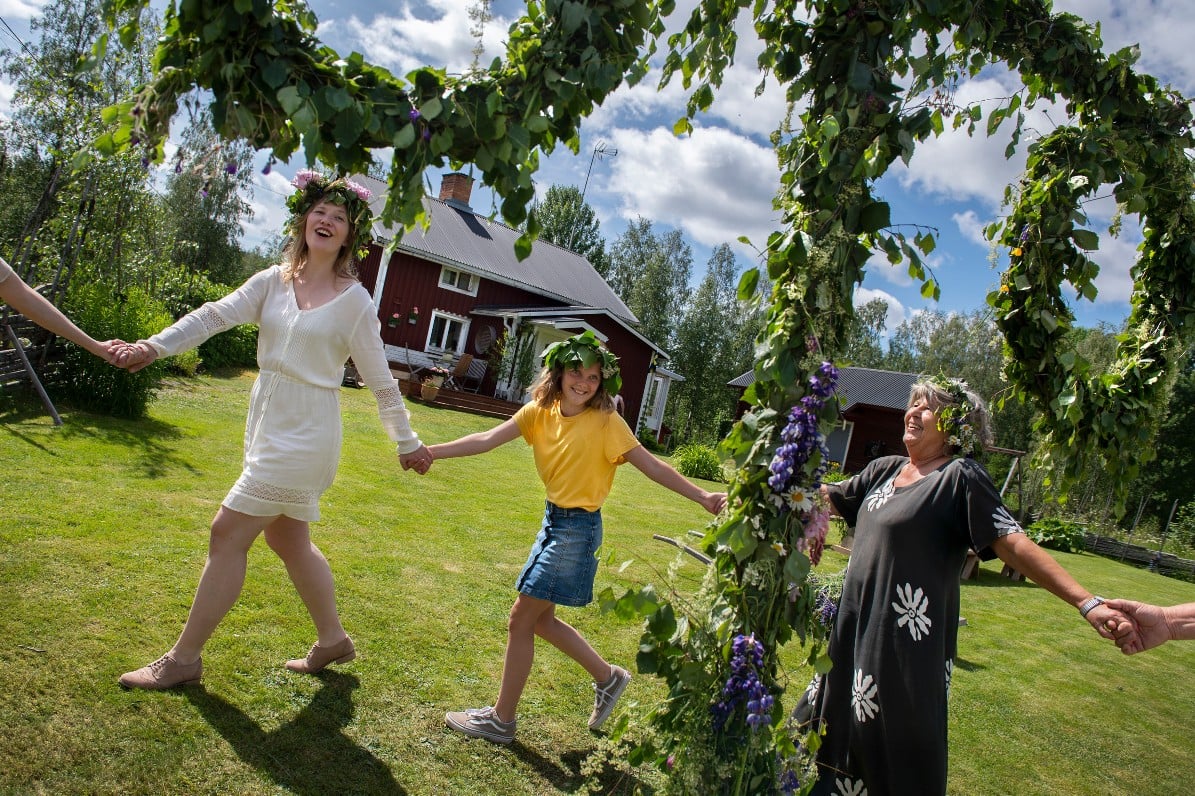
The upmarket private Midsummer Party
If you get invited to a party hosted by monied Swedes, the celebrations can be quite grand, with the dinner – various preparations of herring, Västerbotten cheese tart, smoked salmon, gravadlax, perhaps some meat – laid out on long tables with white tablecloths in a tent or summer house conservatory, with 50 or more guests dressed in formal summer clothing.
The more upmarket Midsummer parties are more likely to follow the traditional format of toasting and singing, so it pays to learn at least one traditional Swedish drinking song so you can take your turn. Sometimes, someone will have printed out a sheet of lyrics to the most popular songs.
Particularly smart people might have decorated and erected their own Midsommarstång in the garden, around which the guests will break the ice by dancing around pretending to be frogs while singing the Midsummer classic Små Grodorna, meaning “little frogs”.
It’s very common for the guests to stay the night, as unless you’re teetotal, by the end of the night, you’re unlikely to be in a state to drive home.
If you’re lucky enough to be invited to a country mansion, your hosts might be able to provide a room, but more often guests will pitch tents in the garden.

The informal Midsummer party
While many Swedes have summer houses, the majority are just cabins with at most two bedrooms and a small kitchen-living room.
Your hosts may make an effort even here, with table cloths and a formally laid table. But in my experience, Midsummer celebrations can also be very laid back, with a guests each bringing a dish potluck-style, a barbecue, and the meal eaten with plates on people’s knees wherever they find a seat.
Even these most informal parties will nod to tradition with a bottle of Akvavit, but the toasting and singing, if it happens, can be a bit halfhearted. You cannot guarantee that anyone will do the frog dance, or that there will be any approximation of a Midsommarstång.
The little village celebration
According to Visit Sweden, only 51 percent of Swedes have access to a summer house and according to a study by Statistics Sweden, as few as one in three children do.
This means that for many people in Sweden, a public celebration is the only option. Almost every village in Sweden will hold one, with a Midsommerstång, stalls selling coffee and cinnamon buns, and tables laid out where families can bring their own food and so celebrate with neighbours.
The event is usually held close to where the village has its dance floor or dansbana, and you might get performances from local folk musicians. Usually, families arrive early in the morning and take part in decorating and raising the Midsommerstång.
People celebrating at their summer house will sometimes pay a visit to the local village event, along with their guests, to enjoy the traditional music and dance around the stång before returning to their private celebrations for the main meal.
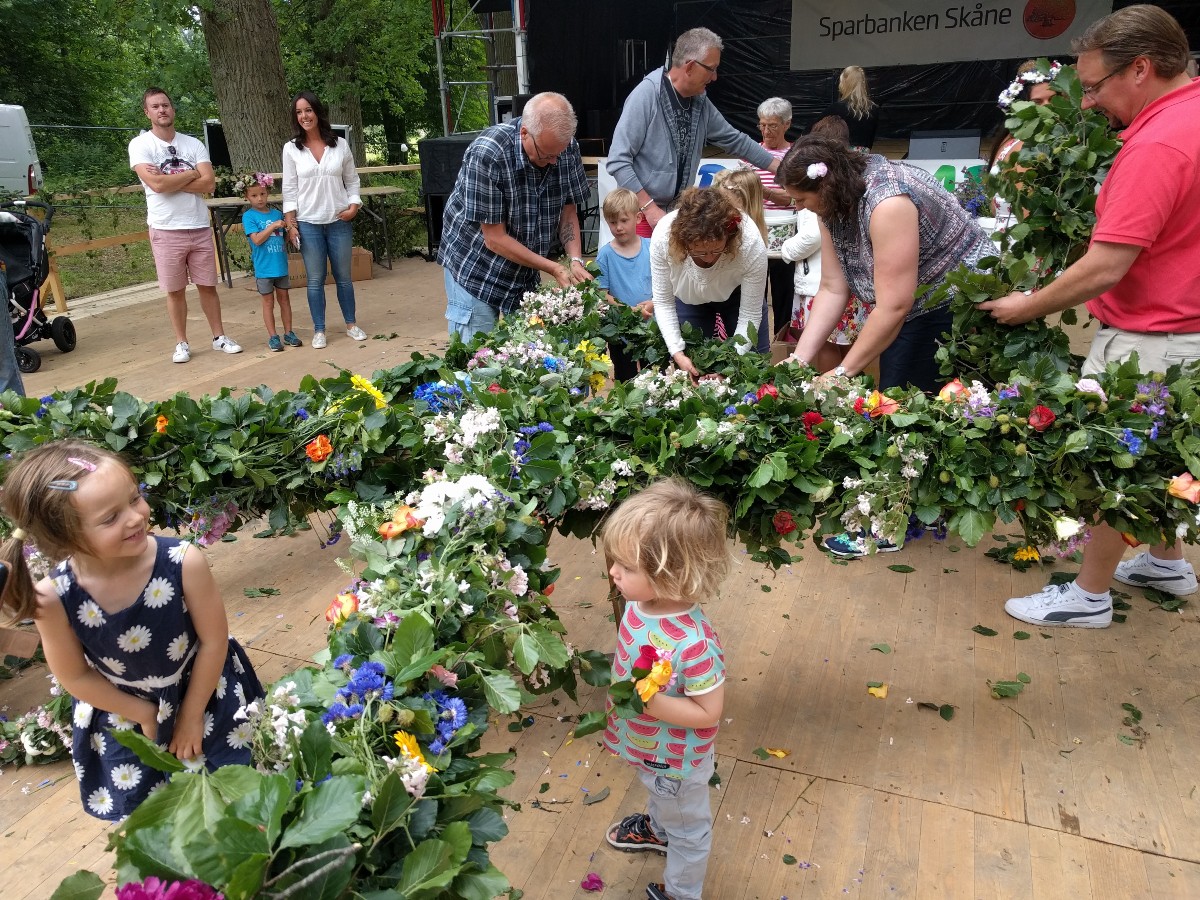
The big regional celebration
In every part of Sweden, there’s a village, country house, or town that draws people who want a bigger celebration. I stumbled on one of these a few years ago, having failed to get invited to a private party.
We ended up going to Övedskloster, an old country house just outside the town of Sjöbo, where Oveds Eke, a clearing by the mansion, has long drawn Midsummer revellers.
The atmosphere was lively and welcoming, with families starting early making Midsummer crowns with flowers and twigs, and helping decorate the stång. There were stalls selling hot dogs, cinnamon buns, and coffee by the thermos and row after row of tables which filled up with families and friends. There was a small funfair.
The best bit, though, was the dancing. I can’t remember who was the headline star – a former Melodifestivalen contestant turned jobbing performer – but she had an insane amount of energy, and she soon had children and adults hopping around the midsommarstång, and then later dancing to her songs.
You’ll find similar events to this all over Sweden, and while they might lack some of the class of private parties, they’re a lot of fun. For anyone living down south tempted by Öveds Eke, here’s this year’s programme. The headliner this year is the EPA-dunk sensation Fröken Snusk.
Many of the bigger regional events have a focus on folk music, dress, and dancing, particularly those in Dalarna, the most traditional Swedish county. The event held at Styrsjöbo, a village by a small lake just outside of Leksand, is one of the many popular events.
Outside Gothenburg, there are big celebrations with traditional clothing at Nääs slott, Tjolöholms slott, and Gunnebo Slott.
Other notable events in Skåne are the celebrations held at Hovdala Slott near Hässleholm, and another event held at Baskemölla, a pretty fishing village near Simrishamn.
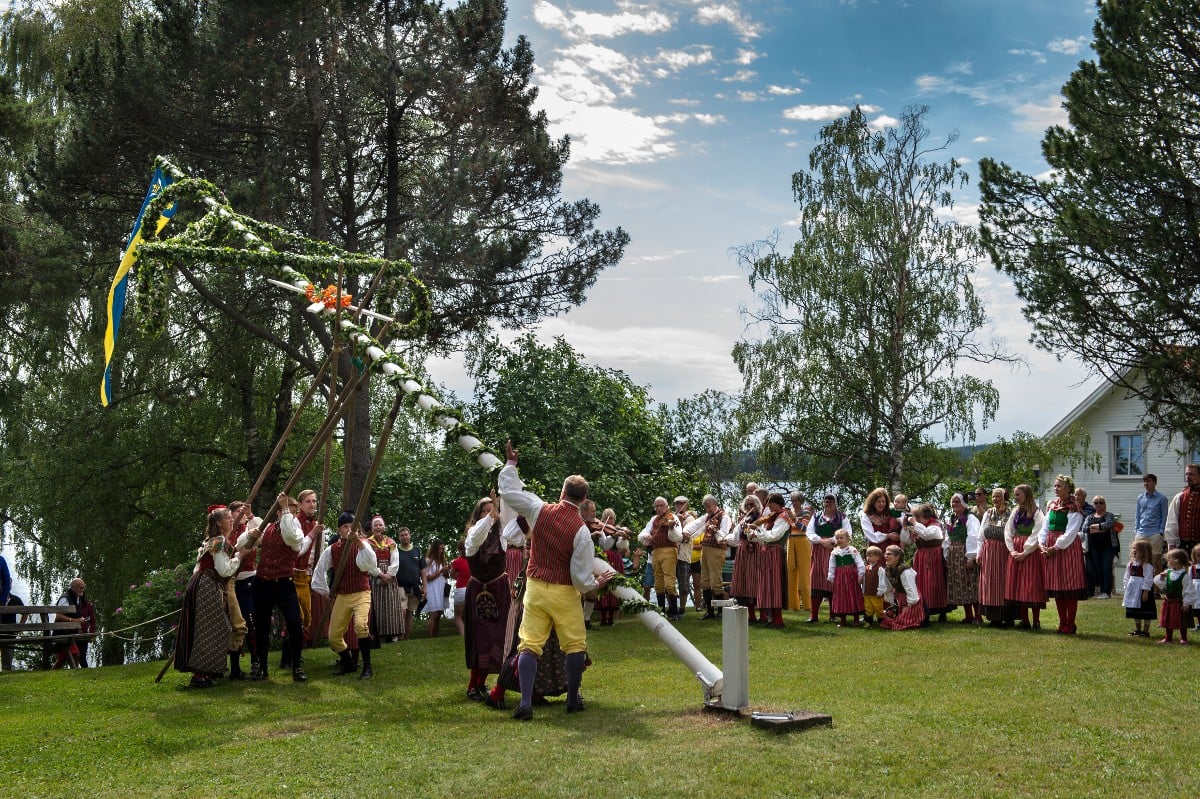
Events put on by public institutions in the big cities
Generally the public events put on by municipalities in Sweden’s big cities are best avoided, although Slottskogen in Gothenburg is supposed to host a good celebration, as does Sofiero, the castle in Helsingborg.
Anyone stuck in Stockholm over Midsummer should definitely consider attending the public event at Skansen, the outdoor museum, which can draw as many as 25,000 visitors if there’s good weather.
The museum seeks to recreate Midsummer celebrations of the past, with volunteer re-enactors dressed in 19th century costumes, but everyone is invited to take part.
The celebrations start at 10am with the making of midsummer crowns, and the decorating and raising of the Midsommarstång, with an afternoon spent dancing around the pole, and then a series of folk music concerts and dances in the evening.
The folk dancing and folk concerts continue on Midsummer’s Day and into the next day (Sunday June 25th), so even if you’ve been celebrating in the countryside, you can take part in some traditional dancing around the pole on your return to the capital.
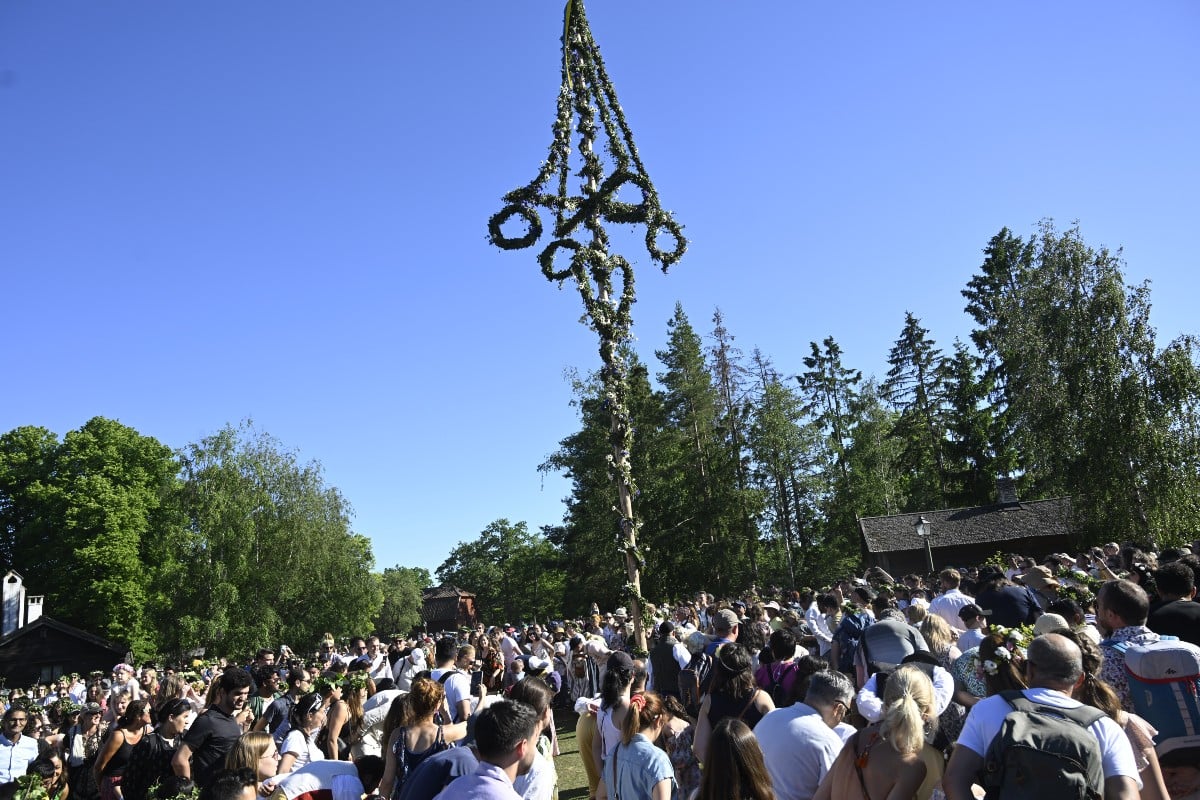

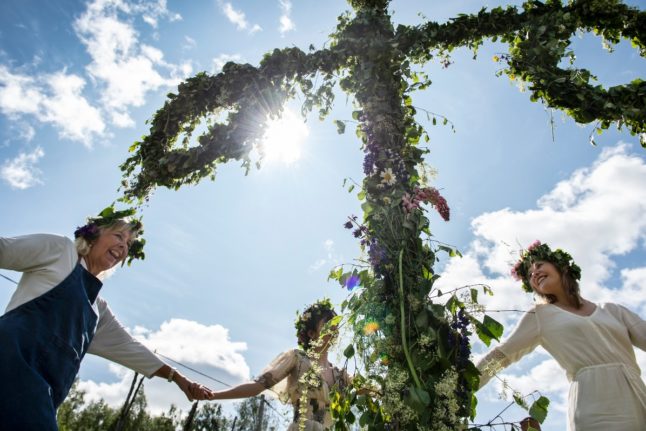
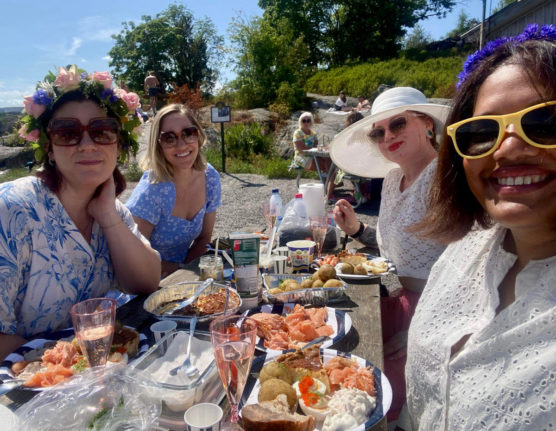

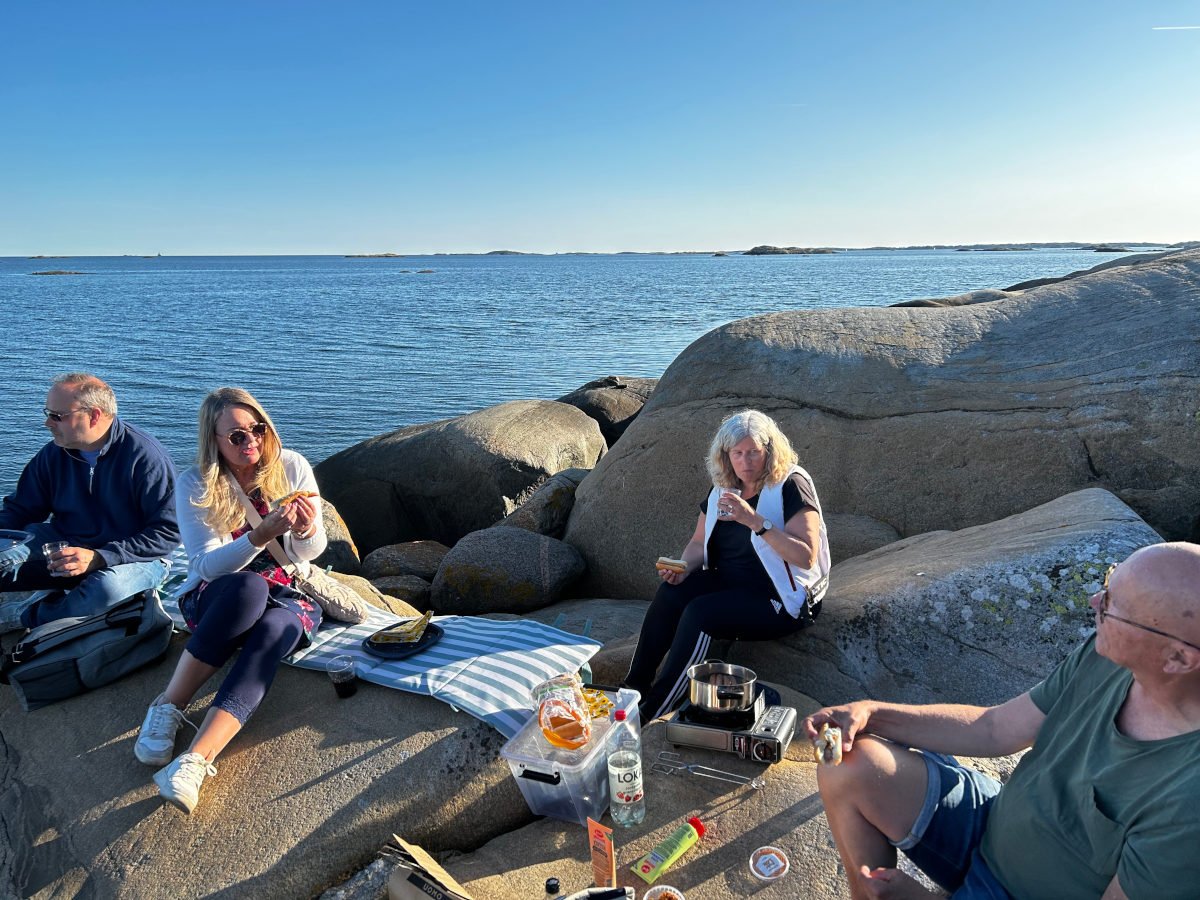
 Please whitelist us to continue reading.
Please whitelist us to continue reading.
Member comments